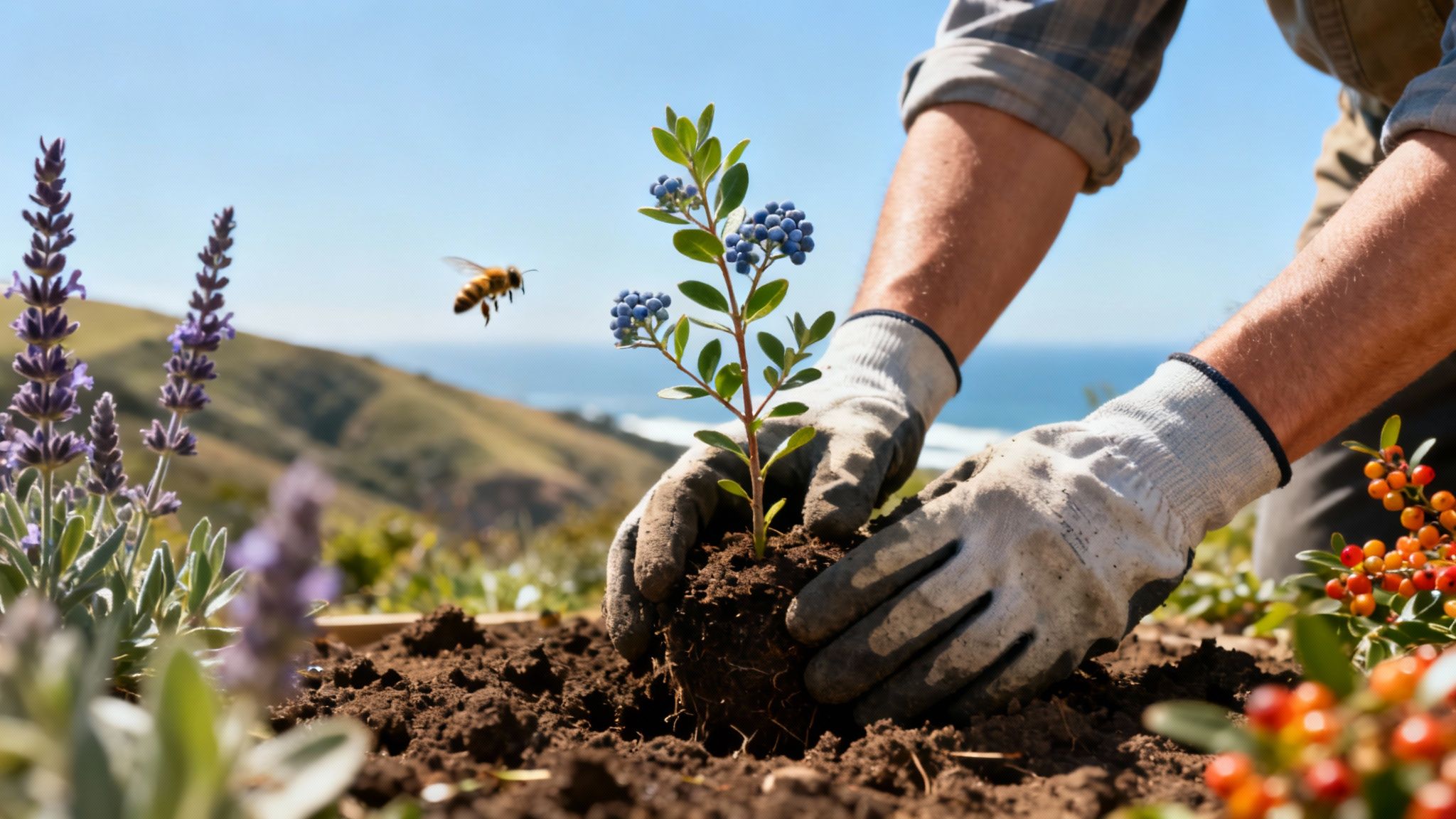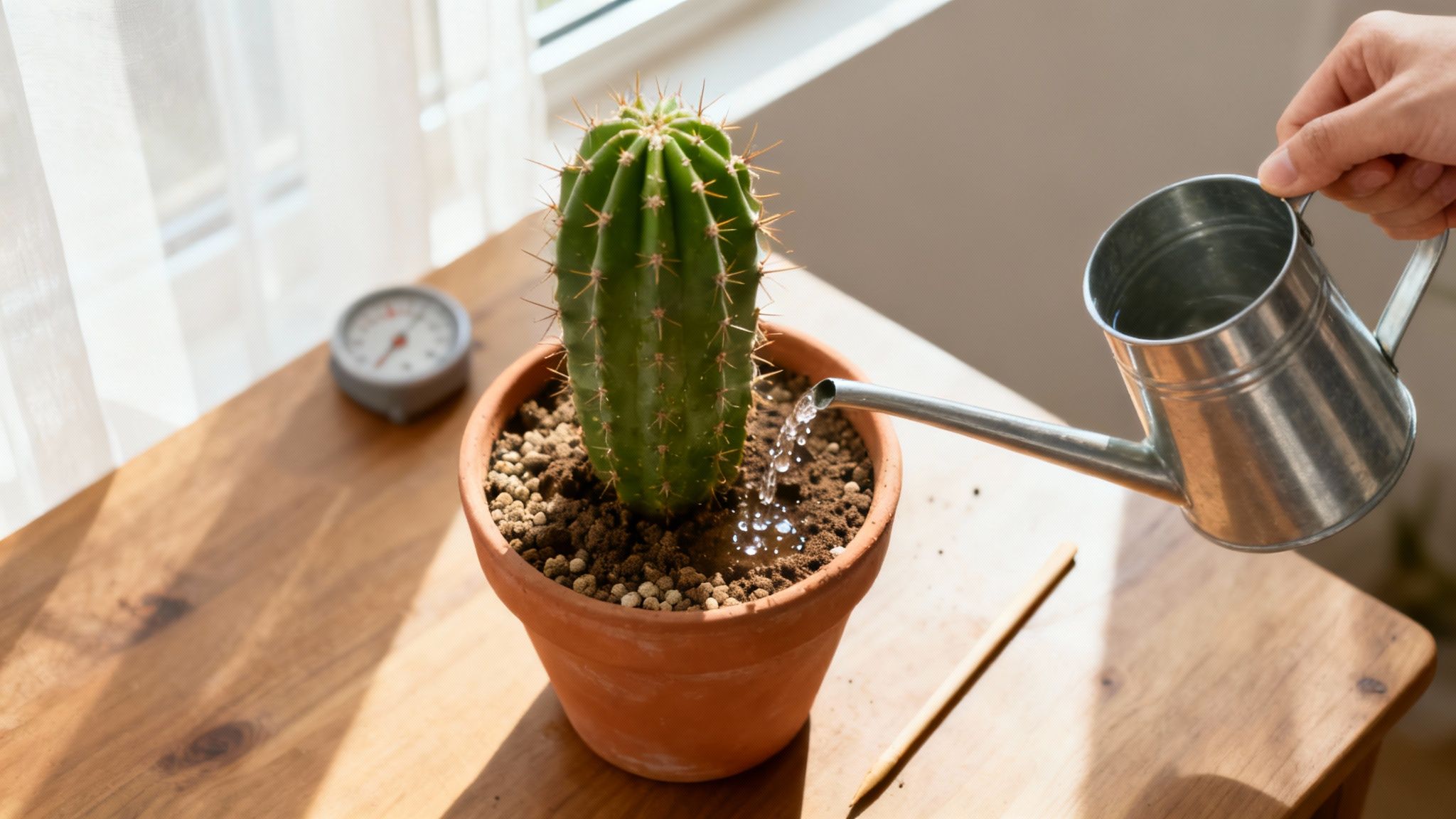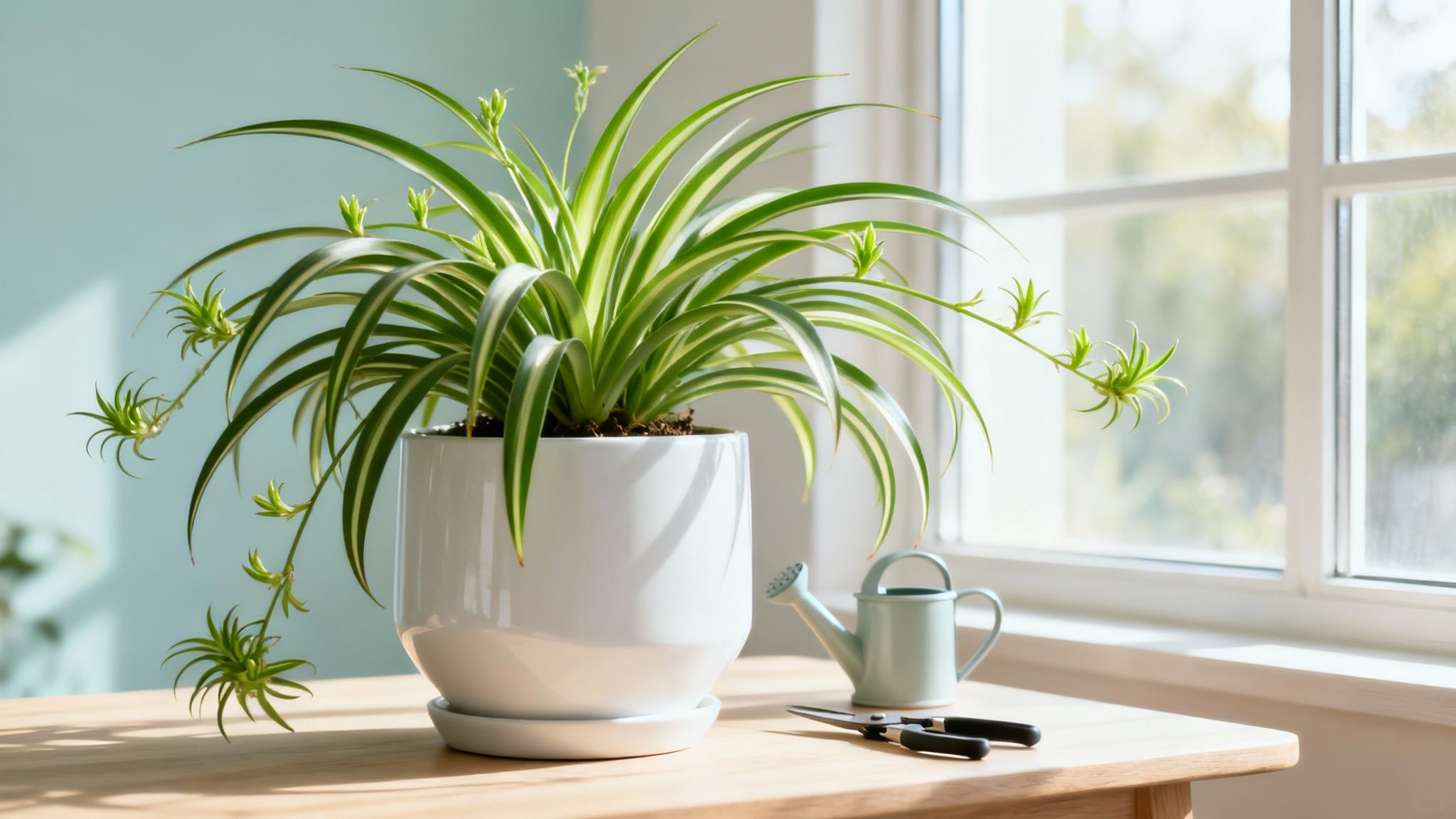Have you ever stood in your garden, wondering how you could make it more earth-friendly, but felt overwhelmed by where to start? You’re not alone. The word "sustainability" can sound huge and intimidating, like a complex concept reserved for large farms or environmental scientists. But the truth is much simpler and deeply rewarding.
Think of your garden not just as a patch of dirt, but as its own miniature ecosystem buzzing with life. Every choice you make—from building your soil to selecting your plants—has a ripple effect. This guide will show you how to embrace sustainability by nurturing that balance. You'll learn practical, water-wise gardening techniques, how to build living soil with regenerative practices, and why biodiversity is your garden's best friend. Let's dig in and turn your yard into a vibrant, productive space that works with nature, not against it.
Your Garden as a Thriving Ecosystem
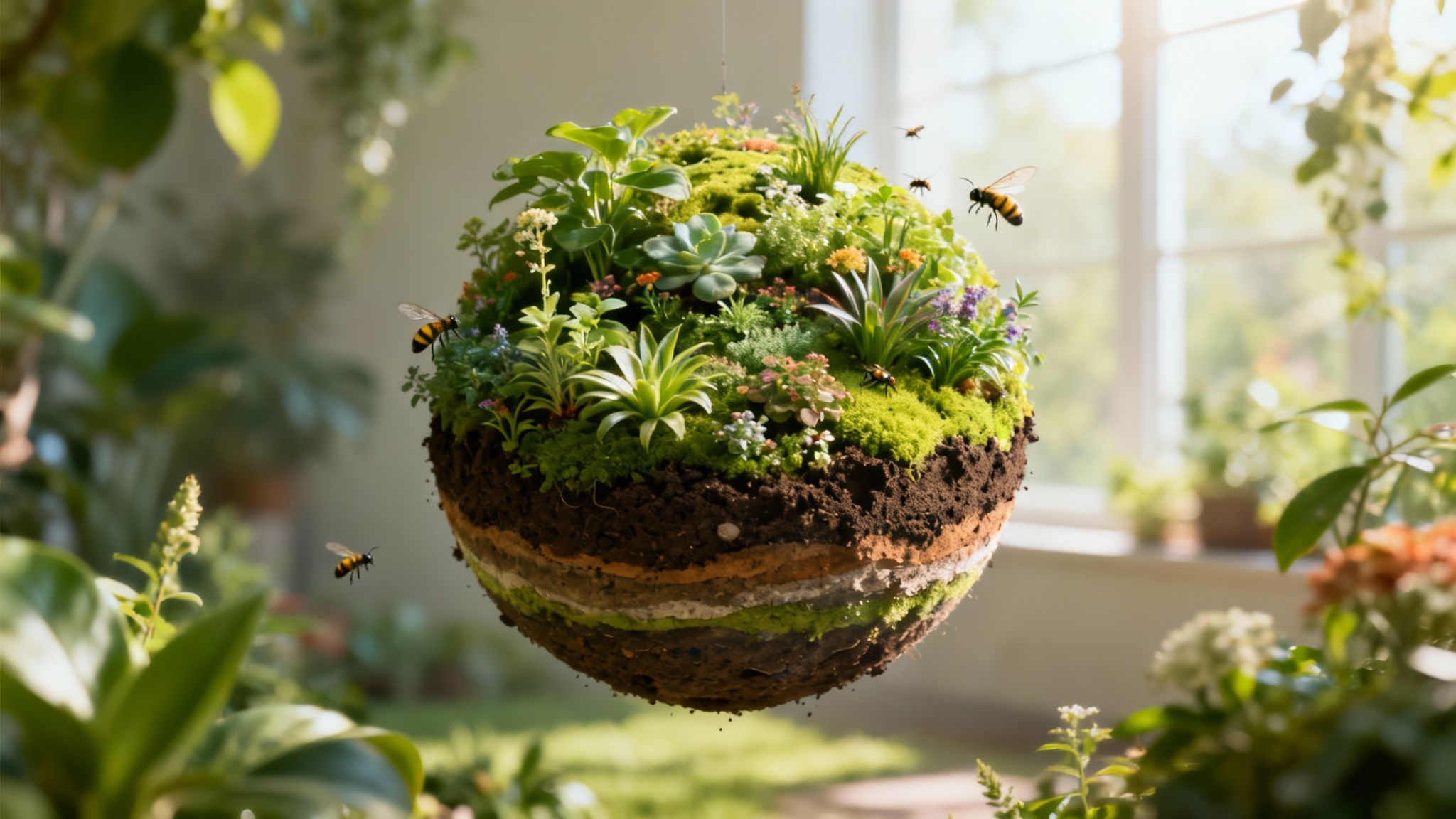
At its heart, sustainable gardening is about working alongside nature, not fighting it with a constant barrage of chemical inputs and back-breaking labor. This philosophy rests on a few key ideas that support the long-term health of your tiny planet.
Regenerative Practices: This is all about actively improving your little corner of the world. Instead of just maintaining the soil, you’re making it richer and more alive with each passing season. You're building a legacy of fertility.
Water-Wise Gardening: It's not just about using less water; it's about using it wisely. This means choosing the right plants for your climate and using techniques that deliver water directly to the roots where it’s needed, minimizing waste.
Boosting Biodiversity: A garden humming with variety is a strong garden. When you welcome a mix of plants, beneficial insects, and local wildlife, you create a natural system of checks and balances that helps manage pests and pollinate your crops.
This approach transforms you from a simple caretaker into an ecosystem architect. You don’t have to figure it all out by yourself, either. With tools like Tendra, you can connect with a community of growers who are already putting these principles into practice, sharing what works—and what doesn’t—right in your area.
Embracing Regenerative Practices for Living Soil
Regenerative gardening is the vibrant heart of sustainability. It’s about more than just minimizing harm; it’s about actively making your garden better. Think of your soil as a living bank account. With regenerative practices, you’re constantly making deposits—nutrients, organic matter, and life—that build its value over time, ensuring an abundant future.
This powerful approach is simpler than it sounds and boils down to three core ideas that create a thriving ecosystem. This diagram shows how the pillars of regenerative gardening—no-till methods, soil cover, and biodiversity—are interconnected, forming the bedrock of a truly sustainable system.
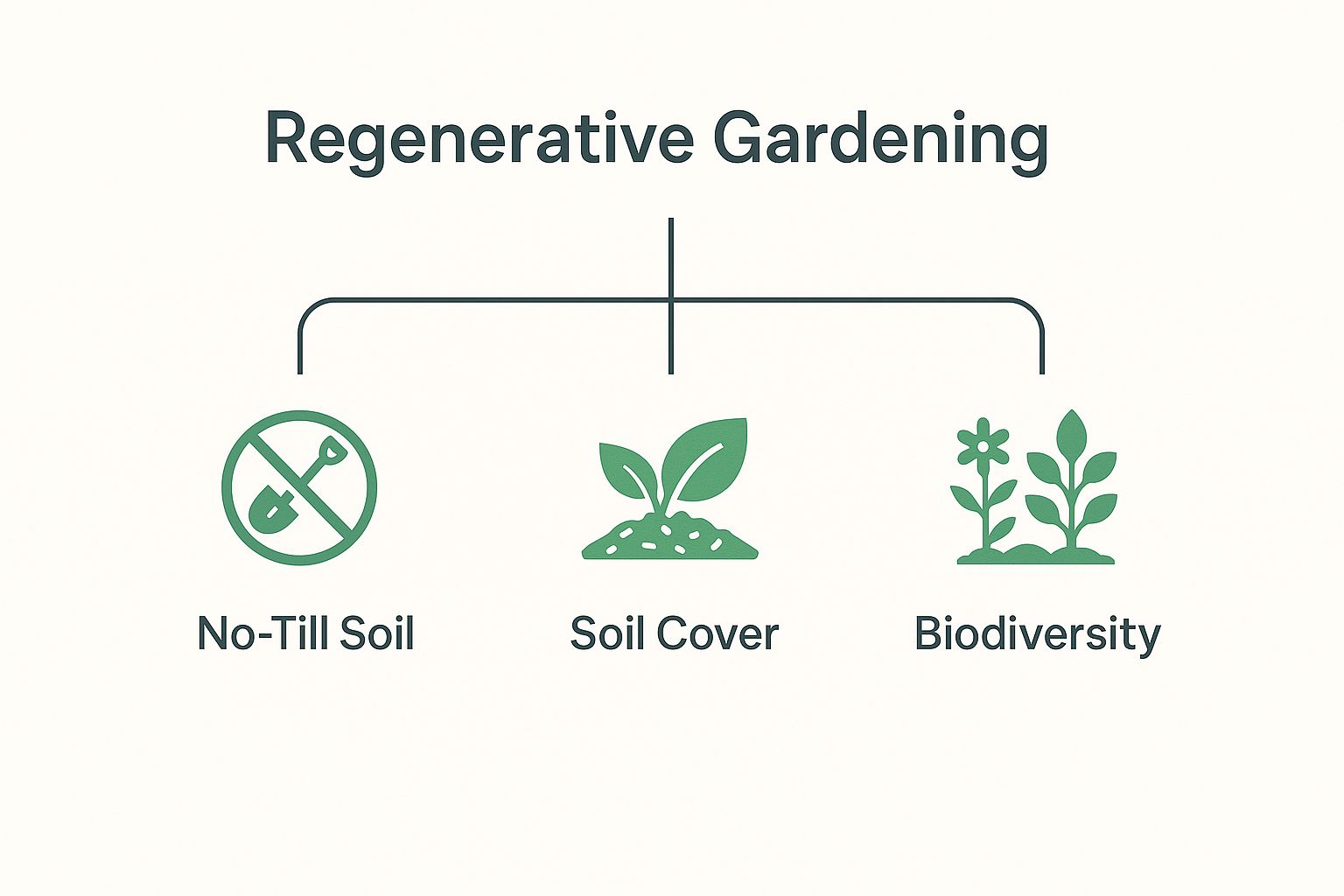
By prioritizing these three areas, you create a self-reinforcing cycle of health that benefits your entire garden, from the ground up.
Pillar 1: Minimal Soil Disturbance
The most fundamental principle is to leave your soil alone as much as possible. Traditional tilling might feel productive, but for the soil's delicate ecosystem, it’s an earthquake. It rips apart the intricate fungal networks (mycelium) that transport water and nutrients, collapses tiny air pockets created by earthworms, and releases stored carbon into the atmosphere.
Surprising Fact: According to the UN, the world's soils are the second-largest carbon store, or 'sink', after the oceans. No-till gardening helps keep that carbon locked in the ground where it belongs.
Pillar 2: Keep the Soil Covered
Take a walk through a forest—you’ll never find bare soil. Nature always blankets the ground with a protective layer of leaves, twigs, and living plants. Bare soil is vulnerable; it gets washed away by rain, baked hard by the sun, and becomes a welcome mat for weeds.
Keeping your soil covered is a cornerstone of regenerative gardening and sustainability.
Organic Mulches: Spread a generous layer (2-4 inches / 5-10 cm) of wood chips, straw, shredded leaves, or compost. This blanket smothers weeds, holds in moisture by slowing evaporation, and slowly breaks down to feed soil life.
Living Mulches & Cover Crops: Plant low-growing "green manures" like clover (Trifolium repens) or vetch (Vicia sativa) between your main crops. These living mulches protect the soil, and many, like clover, fix nitrogen from the air, providing your plants with free fertilizer.
Pillar 3: Maximize Biodiversity
Planting a large patch of a single crop—a monoculture—is like sending an open invitation for pests and diseases. Biodiversity is the antidote. A garden buzzing with a rich variety of plants creates a balanced, resilient ecosystem that can largely take care of itself.
This is where polycultures and companion planting shine. Polycultures involve growing multiple types of plants together, mimicking nature's diversity. Companion planting is a more targeted version, pairing plants that benefit each other.
Example: Plant marigolds (Tagetes) around your tomatoes to help deter nematodes, or basil (Ocimum basilicum) to improve tomato flavor and repel pests.
Benefit: Mixing in flowers like borage (Borago officinalis) and calendula (Calendula officinalis) attracts pollinators and beneficial predatory insects, which act as your personal pest control squad.
Figuring out the right plant combinations can be a challenge. This is where community knowledge becomes a game-changer. Tendra’s Twin Plant Mates feature helps solve this exact problem by connecting you with gardeners nearby. You can see which cover crops are thriving in your area or discover proven polyculture pairings, turning shared local experience into your garden’s greatest asset.
Mastering Water-Wise Gardening for a Resilient Garden
Water conservation is a huge piece of the sustainability puzzle. But being "water-wise" isn't about starving your garden. It’s about being smart and efficient—creating a garden that’s more resilient and less demanding. This shift solves common headaches like high water bills and the endless chore of watering, helping your garden thrive with less waste and less work.
Smart Plant Selection: The First and Best Step
Your most powerful water-saving decision happens before you even pick up a trowel: choosing plants that belong in your climate. Trying to grow a water-guzzling tropical plant in a dry region is a constant, resource-draining battle.
When you select plants that are naturally drought-tolerant or native to your area, you work with nature. Think of Mediterranean herbs like rosemary (Salvia rosmarinus) and lavender (Lavandula angustifolia)—they are famously tough and need little water once established.
Did you know? Swapping a traditional lawn for native, drought-tolerant landscaping can slash your outdoor water use by 60% or more. This one change makes a massive difference for your wallet and your local water supply.
This principle is even more critical when growing fruit. The right cultivar can mean the difference between a bumper crop and a summer of frustration. For instance, growers in drier climates can use Tendra’s extensive databases for avocados and dragon fruits to find specific varieties known for their low water needs. This is where climate-specific variety selection turns a smart choice into a truly sustainable harvest.
Building a Garden That Holds Water
Once you have the right plants, the next mission is to create an environment that treasures every drop. Healthy, living soil acts like a giant sponge, soaking up rain and releasing it to plant roots when needed. Compacted, lifeless soil does the opposite—water just sheets off the surface. The best fix is adding organic matter like compost. A mere 5% increase in organic material can quadruple your soil's water-holding capacity.
Here are three practical tips to implement immediately:
Install Drip Irrigation or Soaker Hoses: These systems deliver water directly to the plant's base, dramatically cutting down on evaporation. In contrast, overhead sprinklers can lose up to 50% of their water to wind and sun.
Lay Down a Thick Layer of Mulch: A 2-3 inch (5-8 cm) layer of organic mulch like wood chips or straw insulates the soil, keeps it cool, smothers water-stealing weeds, and slows evaporation.
Harvest Rainwater: Connect a rain barrel to a downspout for a free supply of chlorine-free water that your plants will love, especially in containers and raised beds.
Cultivating Biodiversity for Garden Health

Now, let's zoom out and see your garden for what it really is: an interconnected ecosystem. This is where real sustainability kicks in. Fostering a rich web of life, or biodiversity, is the best insurance policy for your garden. It creates a resilient environment that naturally fends off pests and diseases without constant intervention.
When you invite biodiversity into your yard, you’re building a bustling community. You're rolling out the welcome mat for beneficial insects, hardworking pollinators, and helpful birds. This lively neighborhood creates a natural balance where predators keep pests in check and every plant gets the pollination it needs.
Moving Beyond Monocultures
One of the biggest roadblocks to a healthy garden ecosystem is the monoculture—those neat rows of a single plant type. It might look tidy, but it's an open invitation for pests and diseases. A diverse garden is a confusing landscape for pests and far more resilient.
Here are practical ways to boost biodiversity:
Create Layers: Think in three dimensions. Combine tall trees, medium-sized shrubs, perennials, and low-growing groundcovers to offer a variety of habitats for beneficial critters.
Plant Native Species: Native plants are the bedrock of your local food web. They’ve evolved alongside local insects and wildlife, providing the exact food and shelter they need—and they're already adapted to your climate.
Embrace Polycultures: Mix it all up! Plant your vegetables, herbs, and flowers together. It not only looks incredible but also creates a powerful, self-regulating system.
Sourcing Diverse and Locally Adapted Plants
Boosting your garden's biodiversity starts with finding the right plants. You need a mix of species that fit your region, which can be tough at big-box stores. This is where connecting with your local gardening community is a game-changer.
Problem: You want to add unique, climate-adapted plants to your garden, but you can't find them locally. You're stuck with the same generic varieties everyone else has.
Solution: Tap into a network of local gardeners who are already growing and sharing these plants.
Tendra’s Plant Exchange Marketplace is a vital tool for the sustainable gardener. It plugs you directly into a network of passionate local growers, creating a hub for biodiversity. Through the marketplace, you can find and trade for:
Hard-to-find native plants that support your local ecosystem.
Heirloom vegetable varieties proven to perform in your specific climate.
Rare cultivars that bring unique beauty and resilience to your garden.
By tapping into this local network, you're not just diversifying your garden—you're helping preserve unique plant genetics within your community. You can start exploring this world by checking out the Tendra plant database. This is sustainability in action: connecting, growing, and sharing to build a healthier world, one garden at a time.
Sarah’s Sustainable Urban Oasis: A Real-World Example
Let's ground this theory in a real-world scenario. Meet Sarah from Portland, a home gardener who transformed her small, struggling urban backyard into a thriving, sustainable oasis. Her journey showcases how regenerative practices and community knowledge come together.
When Sarah started, her yard had compacted clay soil and a few sad patches of grass. Her first move was to heal the soil. Instead of tilling, she went the no-till route, laying down cardboard and layering organic matter in a method called sheet mulching. This simple choice kicked off the soil's healing process.
Next, she tackled water use by installing a rain barrel. With water sorted, she focused on planting. The challenge wasn't just finding plants that would survive, but plants that would thrive in her specific microclimate. Using Tendra's Cultivar Explorer, she discovered a dwarf avocado variety, Persea americana 'Little Cado', known for being compact and well-suited for the Pacific Northwest. Nailing this climate-specific choice was a huge step toward a garden that gives back more than it takes.
The real turning point, however, came from her community. Through Tendra’s Twin Plant Mates feature, she connected with an experienced grower nearby who shared priceless, region-specific companion planting tips—like which native flowers would best attract the specific pollinators her avocado tree needed. Finally, she used the Plant Exchange Marketplace to trade for native perennials like Oregon Grape (Mahonia aquifolium). Sarah’s story shows that sustainability is the powerful combination of healthy soil, smart water use, informed plant choices, and a little help from your community.
Your Path to a Greener Garden Begins Now
No-till or no-dig gardening respects this underground world. It preserves the soil’s structure, which leads to better water absorption and less erosion. By going no-till, your garden becomes a small but mighty carbon sink.
Embracing sustainability in your garden isn't about a single, monumental task—it's a rewarding journey that begins with a few thoughtful steps. By focusing on simple things like nurturing your soil with regenerative practices, being smart with water, and welcoming more life into your yard, you are building a resilient, beautiful, and productive space. You’re also connecting with something much bigger than your own patch of green.
You’re not in this alone. Think of Tendra as your partner in the garden, connecting you with the wisdom, tools, and local growers you need to bring your sustainable vision to life. Every eco-friendly choice you make helps build a healthier planet, one garden at a time. The path to a greener garden is paved with these simple, powerful actions. Discover sustainable features with Tendra—where local gardeners connect and thrive.
Tendra helps you put these principles into practice with confidence. Discover tips, connect with local growers, and find the perfect plants for your sustainable garden.







